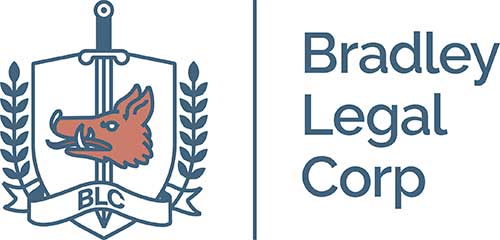Doctors have a very real threat of out-of-control lawsuits and ridiculously high jury awards. For all of you working in the medical field, you should be proactive and have a properly drafted asset protection plan. The unfortunate reality is that medical malpractice litigation alone is a multi-billion-dollar industry. Yet a doctors total risk profile goes beyond just medical malpractice.
Health care professionals:
- – You are in a high net-worth, and high liability profession
- – You have high visibility, traceability, and or collectability
- – You have extensive government compliance requirements, from HIPAA to wage & hour, which are often difficult to meet or even be aware of
- – Your position as an Employer with Employees as employee related lawsuits are becoming a huge issue
- – Your ownership in a business and liability generating assets
- – Your investments in liability generating assets such as real estate
- – Your children and their activities (especially driving)
- – Your service on foundations or boards
Any one of these alone makes you a target for lawsuits, but the combination of several, creates a need for proactive planning. Estate planning is critical, but alone won’t protect your assets. Basic risk management is critical, but insufficient.
What is Asset Protection?
Asset Protection is NOT traditional estate planning. Asset Protection is modern estate planning that prepares for and anticipates potential liability issues that could destroy an individual, business and / or family assets from lawsuits. Your goal when planning for asset protection really is about “lifestyle preservation” and “peace of mind”. You are setting up legal barriers and placing your assets in a safe like you would gold or guns. Physicians have to manage a lot of risk in addition to your medical profession. You are also most likely making financial investments in real estate, in business ventures or in passive cash flow streams. You may own your medical practice and building with various business liabilities. You have a range of risks with multiple levels of liability that needs to be properly protected and managed.
Medical Doctors Are Highly Visible
Asset Protection and liability lawsuits are not things that you think about or that you were taught to manage in medical school. However, you definitely should be prepared. A new survey released by the American Medical Association shows that most doctors will be sued for malpractice at some point during their careers. Although many of these lawsuits are either dropped or dismissed, the fact is that most doctors can expect to face a medical malpractice lawsuit at least once in their career. For cases that go to trial, the defense cost can be up to $100,000 or more. Lawsuits create damages beyond financial costs, it can harm your reputation, reduce future income, and cause emotional and family turmoil.
The amount of money it takes to go through the entire litigation process with legal fees, depositions, expert witnesses, and trial costs is going to cost a lot of money. That’s before you even get a chance to appeal any legal judgment claim.
But I have Malpractice Insurance
Some of you reading this article will say “I carry a medical malpractice insurance policy, I’m covered”. Your insurance carrier will cover most of your litigation expenses if the claim is made against the insurance provider. However, you are likely working with the assumption that the lawsuit only has an “internal” claim for medical malpractice, and the coverage is “inclusive” not “exclusive.” Do NOT assume that your insurance provider will cover 100% of the claim amount. In addition, you have “exceptions and exclusions” to every insurance policy. One big insurance defense tactic is to not pay claims for what they consider “intentional acts and material misrepresentations.” These misrepresentations can even come from the time that you initially filled out the actual policy application. Any misrepresentation can cause the entire policy to be deemed void, even if the misrepresentation was not intentional.
Further, you cannot forget about “internal” issues from your business that goes beyond your medical practice and malpractice policy. You are exposed to billing issues, wage and hour claims, payroll violations, discrimination and sexual harassment claims, or other issues that are not covered by medical malpractice insurance. Other “external” issues can be raised if a doctor owns the property of his practice. If this is the case, then any issues that can be raised from that asset can cause the doctors assets to be at risk. The potential liability and risk can be substantial.
The point is, people do not buy auto insurance because they expect to have a serious and costly car accident. They do it ‘in case’ they have one. That is the importance and value of an asset protection plan. The good news is that properly constructed asset protection plans protect your wealth against all lawsuits, and all forms of attack.
Asset Protection Plans that Work
For those medical doctors who want true peace of mind, I generally recommend a Foreign Asset Protection Trust (FAPT) in the Cook Islands. This is because they provide the greatest protection of assets. It is simply the best home court advantage. The Cook Islands statutory do not recognize any other jurisdiction’s court orders and, the statute of limitations in the Cook Islands is only one year, making it very difficult for a creditor to file their lawsuit on time. What “statutory non-recognition” means is that any U.S. court judgment is completely worthless in the Cook Islands. The offshore trustee will tell any creditor with another country’s judgment that their judgment is not recognized in the Cook Islands. The person suing you would have to start all over and sue you in the Cook Islands, assuming that the claim is made within the one year statute of limitations, and they would have to prove their case by the highest legal standard in the world: the murder standard “beyond a reasonable doubt.” The plaintiff also would have to front ALL the court costs including flying in a judge from New Zealand. And if they loose, they pay your legal fees, which they most likely will by having to prove the case “beyond a reasonable doubt.”
The U.S. does have an asset protection trust called a Domestic Asset Protection Trust (DAPT). They were created 10 years after the Cook Islands. They were originally started in Alaska, and since then roughly 17 other states have enacted some form of Self settled Spendthrift legislation. DAPT’s are less expensive than their purely foreign counter parts, but they fail on effectiveness, cost and control. Furthermore, DAPTs can give one a false sense of security. Recently, a pattern in court has been recognized where DAPTs are being pierced and their choice of law clause is being ignored. The foundation of the U.S. legal system is the U.S. Constitution, which has the “full faith and credit clause.” This means that every State must give full faith and credit to the judicial proceedings and court orders of each and every State. These are just a few recent high-profile cases with all good facts, but the courts disregarded the trust jurisdiction: In re Huber (2013), Dhal vs Dahl (2015) and Toni 1 vs Wacker (2018). We also have a California case called Kilker vs Stillman (2012) where this court completely disregarded a Nevada Asset Protection trust for a California resident. That is why residents of one state, using the asset protection of other states like Nevada, which they are not a resident of, will not work. The only true gold standard of asset protection that has withheld 40 plus years of challenges has been the Cook Island Asset Protection Trust. It is still the global gold standard.
Now, most clients do not need a purely foreign asset protection trust. For most, this is just over kill. And DAPT do have benefits, such as reasonable costs and less IRS reporting disclosures. The good thing is that you can actually combine the best of both worlds. You can have the flexibility of a DAPT with the strength and power of the Cook Islands in reserve by using a “Bridge Trust.”
The Bridge Trust
The Bridge Trust was created over 30 years ago. The term “bridge” is used to demonstrate how we are using a FAPT and connecting two countries together with a bridge. Then you just cross the bridge from the U.S. to the safety of the Cook Islands if or when you are ever in need though a “migration policy.”
Like all Asset Protection Trusts, the Bridge Trust is an Irrevocable tax neutral grantor trust. The trust is also a Self Settled Spendthrift trust. What this means is it is created by you, for you, as your own beneficiary. And since it is a grantor trust, you still retain some of the powers in the trust. Why you want the trust to be irrevocable is that if you are ever challenged and the judge orders you to bring the assets back to be collected on, you can’t. For the purposes of IRS reporting and disclosures, the Bridge Trust is considered a domestic, not foreign trust, because it is specifically drafted to meet the two-part test of USC section 7701 (the “control test” and the “court test.)” The Bridge Trust does not require foreign IRS tax filings or asset disclosures, and the trust costs and annual maintenance fees are lower compared to fully foreign offshore trusts. The Bridge Trust provides the flexibly of a DAPT and the strength and power of the Cook Islands for your asset protection.
How Does this Structure Work
The way this asset protection structure works is with LLC’s created to hold your real estate and other assets that may be a cause of a potential liability, anything that has a motor, or has a key or can go boom. Next, an Asset Management Limited Partnership (AMLP) is created that acts as your asset holding company. The AMLP holds the bulk of your assets like cash, stocks, bonds, and receivables. All your LLCs are going to be held inside the AMLP. The reason I recommend an AMLP instead of an LLC is because the AMLP has a delineation or separation between the managing partner called the general partner and the minority partner. You will be the general partner of the AMLP. This gives you control / use and enjoyment of the assets in the holding company.
The final step is the asset protection Bridge Trust. The Bridge Trust is going to be the minority limited partner of the AMLP, this is the non-controlling interest, but it is the ownership interest of the AMLP. This separates “ownership” from “use and enjoyment.” The Bridge Trust owns the AMLP and the assets, while you enjoy the use of the financial assets minus the liability.
Then either two things happen. Either you die, at which point your assets distribute as defined in your living trust. Or, should there be a crisis (lawsuit), the Bridge Trust is triggered, and the assets cross the bridge to the safety of the Cook Islands. When the threat is resolved, the assets transfer back domestically with no IRS penalty.
Be Proactive
Medical malpractice may not be your top concern, however, other areas in your life and real estate investments carry liability and visibility that has to be managed and planned for. Have the best asset protection system in place before you need it so that you can sleep well knowing your financial livelihood is safe.
By: Brian T. Bradley, Esq.
Asset Protection Attorney for Medical Doctors and Investors – as featured on: White Coat Investors; Next Level Physicians; Fearless Freedom with Dr. G; The Freedom Formula for Physicians; and Docs Outside the Box Podcasts
Next Level Physicians:
Asset Protection in The 21st Century – National Academy of Continuing Legal Education


Recent Comments